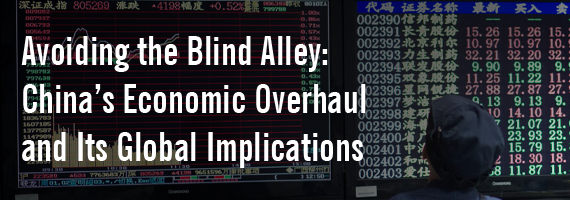Executive Summary: Is Implementation Evident?
In part four of the executive summary, Daniel H. Rosen summarizes the evidence of reform that has accumulated since the Third Plenum in November 2013 - and argues that at least some reforms are underway across the board. For more on this topic, read Chapter 2 of the full report.
In each of these nine regulatory clusters, the commitments in the Decisions are important, and there are at least initial signs of follow-through. While we concentrate on implementation, we also consider counter-indications. All clusters show signs of resistance, ambiguities about intentions, and ongoing internal debates about the end point of regulatory reform. We recognize these patterns from previous periods of reform in China: rather than use political capital to excise long-standing verbiage from policy documents, leaders add new terms while reinterpreting old ones to suit their needs. For instance, China is hardly communist any longer, yet the Party retains that label rather than stir up ideological disputes by trying to change it. Therefore, we put more weight on what is new than what is old.
Movement has been relatively strong in center-local fiscal reform and financial system reform. Serious initial steps have been taken on SOE reform and environmental policy, although it remains to be seen whether Beijing will pursue these programs comprehensively. On competition policy, action has been dramatically stepped up but not evenhandedly. Foreign trade and investment reform have gotten some attention, and some elements have been liberalized (such as outbound FDI regulation), but there is a lack of clarity about directions given a host of conflicting signals about the attitude toward foreign businesses. Land, labor, and innovation policies are more difficult to describe as having broken with business as usual, although each case shows at least some indication of new directions.
President Xi is setting timetables for change, so we will not have to wait indefinitely to see what the Decisions means and whether optimism is justified. In important cases, Beijing has moved ahead and established near-term interim deadlines to get on track to 2020, such as a 2016 deadline for center-local fiscal reform, a 2015 start to permitting NGOs to file public interest environment lawsuits, and an immediate increase in central SOE dividend payment rates.
China’s economic reforms will be real if they have desired effects on economic flows. We therefore explore observable metrics that should reflect reform implementation for each regulatory cluster. For instance, center-local fiscal reform will show up as an increase in central transfers to local governments as a share of centrally mandated local expenditures. Competition policy modernization should result in a transparent reduction in the number of industries exempted from normal market disciplines, including state-related enterprises. Interest rate liberalization will be reflected in convergence between formal bank lending rates and informal curb market rates for borrowers.

